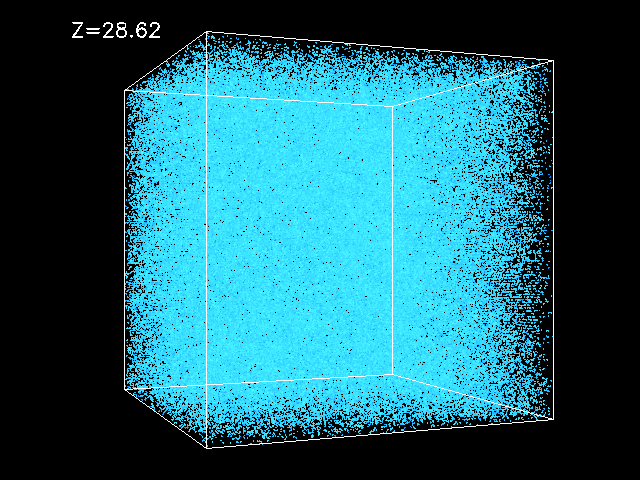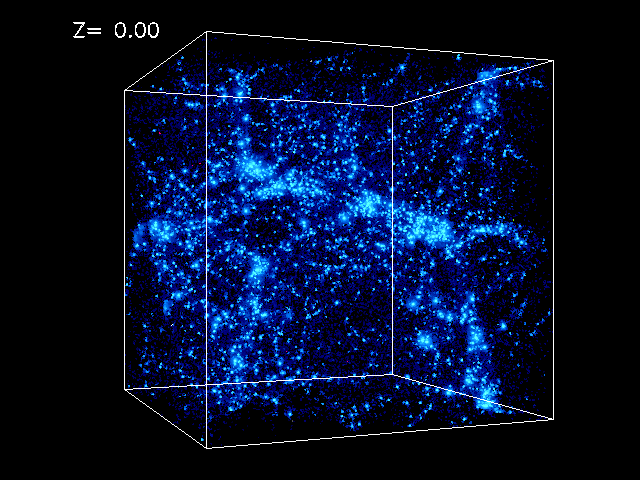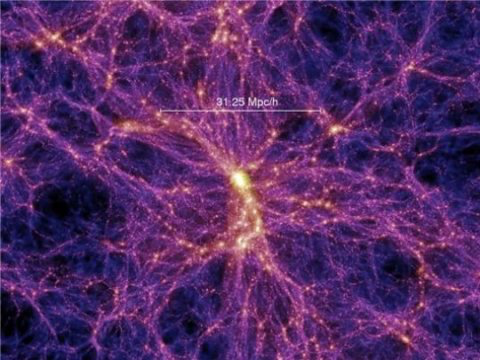-
Posts
2579 -
Joined
-
Days Won
21
Content Type
Profiles
Forums
Events
Posts posted by Ghideon
-
-
1 hour ago, awaterpon said:
I mean gravity is not infinitely throughout space. It is limited to a range extendable with speed of light c.
You keep repeating that, even after all the things you have been told in this thread. Speculation: are your ideas based on misunderstanding Big Bang cosmology? You seem to argue as if there are parts of the universe where no gravity waves have ever passed (yet)? If so, then I think that discussion requires a separate thread.
0 -
17 minutes ago, awaterpon said:
the equation I presented
Which one? You have presented several revisions, all of them incorrect.
17 minutes ago, awaterpon said:What if there is not new math, is that possible ?and it's only an addition to GR and just the equation I presented which shows limited time instead of infinite distance ?
Detection of gravity waves, with finite speed c, and hence reaching finite distance in finite time, got a Nobel Prize: https://www.nobelprize.org/prizes/physics/2017/press-release/ So it is considered a well established part of science.
On 4/13/2019 at 11:31 AM, awaterpon said:Honestly I'm merely an engineering student
Why not try to learn some physics, since you seem genuinely interested in these topics?
0 -
3 minutes ago, awaterpon said:
We have limited time T instead of infinite distance r.
Again, nothing new. A gravitational wave, as predicted by general relativity and confirmed by observation, is the same speed as the speed of light (c).
https://en.wikipedia.org/wiki/Speed_of_gravity
Here are the scenarios I see at this time:
1: Keep modifying the equation until it matches observations and gives correct predictions where applicable. The result will be General Relativity*, an already known theory.
2: Keep modifying by adding constraints and adjustments until the equations has no measurable effect and can't be tested. Such changes are trivial to invent and has no scientific value.
3: New theories beyond GR emerge, compatible with GR in areas where GR applies. (Quantum Gravity or similar)Given the progress so far I boldly state that probability for #3 is zero within the scope of this thread.
Is there any point of continuing this discussion?
*) And other closely related things, I believe it is not necessary to go into extensive details to make a point.
0 -
6 minutes ago, awaterpon said:
A new equation :
F= G mM/(c^2* T^2)
T: is from zero to current time since the existence of mass
Where is the distance r between m and M in the equation above?
What new physics are you trying to describe?
Why keep providing incorrect equations, when correct* equations already exists?*) "correct" means well tested, matching existing evidence, reliable within their respective area of applicability.
0 -
10 minutes ago, awaterpon said:
What if I eliminate both time and speed and add r?
Something incorrect, such as negative gravity for small values of T?
0 -
Did you read my comment on your gravity equation above? You have still not shown anything new that is missing in mainstream physics. You have shown a new equation* for already known concepts and the equation you proposed* seems incorrect. Existing equations matches observations and tests. Your version seems to contradict several things already tested and covered by existing physics.
1 hour ago, awaterpon said:Giving the idea that magnetic field in a wire spread with speed c , my equation would be similar to electrodynamics one , but I couldn't find that equation for electrodynamics where magnetism on wire spread with c speed.
Strange already told you:
21 hours ago, Strange said:assume you are just thinking of something like Coulombs law (that electric force falls off as the square of distance).
Maxwell's equations are more complete and include the fact that changes propagate at c. In fact, this was one thing that made people realise that light was electromagnetic radiation.
Adding your proposed [math](1-\frac{ | r'(t) | t}{c( t_{0} +t)} )[/math] would not work well. See gravity in my previous post.
*) Side note; I still think it was good that you introduced an equation in the discussion! From a scientific point of view I believe it leads to more fruitful discussions, vague descriptions with zero math are commonly seen in this section of the forum.
0 -
2 hours ago, sandokhan said:
That article is available elsewhere for full reading.
Where?
0 -
7 hours ago, swansont said:
electrodynamics
Good point.
Probably the mixing of static and dynamic situations* for both gravity and electromagnetism is the main reason behind the proposals made by OP.
7 hours ago, awaterpon said:Now let's test a point where the magnetic field didn't reach yet.How the equation of the squared proportional distance and force works then.
I asked you to analyse your proposed equation for gravity but I see no response. So here are some comments. As Swanson pointed out you seem so mix static and dynamic things. Here is Newton: [math]F=G \frac{m_{1} m_{2}}{ r^{2} }[/math] Note: there is no time dependency as far as I can see.
Here is your modified version. I have changed into what I think you mean, you have not yet responded to my request to take the changing radius into account. This is a best guess:
[math]f()=G \frac{m_{1} m_{2}}{ r^{2}(t) } (1-\frac{ | r'(t) | t}{c( t_{0} +t)} )[/math]
Assumptions made by me:
- Since you introduced radial velocity [math]v[/math], radius [math]r[/math] is not constant. So I assume you mean [math]r[/math] as function of time; [math]r(t)[/math].
- [math]r(t)[/math] depends on radial velocity [math]v[/math] so I assume [math]v[/math] is time derivate of [math]r[/math], [math]r'(t)[/math].
- You stated that direction of the radial velocity is not important, so I use absolute value [math]| r'(t) |[/math].
- I assume [math]T[/math] and [math]t[/math] uses same changing time component so [math]T[/math] is some starting time [math]t_{0}[/math]+ elapsed time [math]t[/math].
Instead of an equation from Newton we now seem to have a differential equation.
Questions:
Do you see what strange things this equation suggests? Hint: what would happen, according to your math, to two ideal pendulums, started at different times?
Do you see how it seems to differ from the predictions in mainstream physics, how it can be tested and how its is most likely going to fail such test?Maybe it is time to start from scratch, asking questions about mainstream physics in an appropriate mainstream section of this forum?
*) I remember many years ago when I studied. Static and dynamic mechanics were separate courses, first static then dynamic Newtonian mechanics.
2 -
39 minutes ago, awaterpon said:
I don't know yet. But should be something similar to what I presented for gravity, the same idea of limited range extendable with speed of light c. I showed a mistake in current physics a magnetized wire if its magnetism spread with c then it should have a limited range of magnetic force and the equation in which force is inversely proportional to squared distance won't apply"out of range" . The same for gravity I described in fact they all have things in common.
What mistake in current physics? Speed of light in vacuum known, tested and included in the mainstream formulas.
Lets focus on the modified version of Newtons equations that you have proposed. It is already known that Newton does not take gravitational waves, invariant speed of light in vacuum, time dilation and other things that Einsteins relativity handles (SR, GR). There are situations where Newton mechanics applies and situations where Newton mechanics does not apply. Einstein's equations applies to a broader set of situations* and will look like Newton for the situations where Newton applies. Take a look at the https://en.wikipedia.org/wiki/Lorentz_factor for instance:
[math]\gamma ={\frac {1}{{\sqrt {1-({\frac {v}{c}})^{2}}}}}[/math]
Very simply put: for speeds much less than c the factor very close to 1; Newton and Einstein gives same result unless high precision is required. So there is no need for new equations to cover the issues you describe, you just have to know when and where to use the existing equations from mainstream physics.
How do we test that your equation predicts gravitational effects better than Newton and Einstein? Have you analysed your suggested equation for gravity and seen it's implications? The way you have introduced c and t seems to imply some really strange behavior if I understand your descriptions. Hint: take a look at the connection between r, v and t in what you have stated so far. Since this is speculation section I'll let you will work out the details

*) Higher speeds for instance. There are also situations where more work is needed; As far as I know GR does not work good for the center of black holes for instance.
0 -
15 minutes ago, awaterpon said:
But magnetism equation is the same as gravity equation in which a magnet can affect a magnet at infinity and force is inversely proportional to the squared distance . If not and magnetism of a wire spread with c then how the equation applies for distances out of range.
T here will be measured from the time the magnetic field started in a wire.
Can you show the math? So far I have seen an equation for your proposed modification of Newtons mechanics.
0 -
11 minutes ago, awaterpon said:
What do you think of this ?
I think that it is already well established knowledge, according to current physics. It does not test the new equation you suggested.
0 -
Here are some additional questions regarding the predictions of the proposed equation: When does the equation apply? How can it be tested? Since matter does not seem to pop into existence, what is the value of T when testing?
We have:
Perfect circular motion: [math]v=0[/math], no effect from the added parameters.
Speeds [math]v[/math] close to [math]c[/math]: the equation gives incorrect results (while GR predictions matches observations).
For [math]v<<c[/math] we know Newton is a good approximation. Example: space missions using gravity assist* seems to work.So, what situations requires the modifications you suggest?
17 hours ago, awaterpon said:The effective direction is outwards or inwards center so elliptical motion of planets will change its gravity but that will not stop planets being in their orbitals
I think you would have to show how Keplers laws are affected and how observations matches your equations.
One more; since the distance r seems to depend on v and on t, can you write out the equation taking this into account?
0 -
43 minutes ago, Strange said:
Double crackpot!!
I did not know of Demjanov so I searched. Results supports Strange's comment: "Physical interpretation of the fringe shift measured on Michelson interferometer in optical media" paper was retracted by the editors of Physics Letters A.
Quotethe theoretical and experimental claims made by the author cannot be supported and the article should not have been published
0 -
6 hours ago, awaterpon said:
v is a variable quantity just like r it is the calculations for gravity for a moving object at speed v. if v is zero then the quantity vt/cT will equal zero in such case gravity for an object at stationary is the largest amount ever while v increases gravity decreases a little bit .
t=0 only when v=0 , we start to measure t at object beginning of motion . Anyway gravity decreases with time t as well as it decreases with speed v.
There seems to be several things proposed by your equation:
You are using speed to measure relative movement of masses m1 and m2, not velocity. The direction of movement is not important? How is that compatible with Newton where forces, acceleration etc are vectors?
Since, according to you, gravity decreases with increasing speed v, regardless of direction, how does that affect orbital motion of planets etc?Note that GR already exists and observations support GR. Your equation seems to predict a different behavior. What mechanism do you suggest to make mass "pop into existence" so your equation can be tested?
0 -
I think I found my issue in @StringJunky's reference, co-moving coordinates!
Short explanation, I'll try posting a better followup if I understand more details later.
Evolution of structures in a 43 million parsecs (or 140 million light years) box, taken from a simulation. Showing two frames; early universe and present epoch:

From the above two frames it looks to me like the density on large scales is the same. The same amount of matter in a 140 million light years box in two different configurations. What I have missed is that such models and simulations can use different coordinate systems, the side of the box is not necessarily 140 million light years in proper distance. From the reference: On large scales seen here, gravity cannot compete with the dark energy-driven acceleration and the growth of structures ceases. As the contraction of large-scale structures is halted they expand with the universe and appear "frozen" in our co-moving system of coordinates.
0 -
4 hours ago, awaterpon said:
My equation is the same as Newton's gravitional equation multiplied by this quantity:
(1-vt/cT)
Is this the correct equation according to your idea?
[math]F=G\frac{ m_{1} m_{2} }{ r^{2} } (1- \frac{vt}{cT} )[/math]
Can you provide some more explanations what t and v is? When is t=0 for instance.
4 hours ago, awaterpon said:T : is the time measured since the mass came from nowhere
I'm not sure mass will "come from nowhere", but lets assume it can, just as a test; assuming t=1 and v=1, for short times T, it seems that gravity force is negative:
[math]T<\frac{1}{c}, t=1, v=1 \rightarrow (1- \frac{vt}{cT}) <0)[/math]
Is that correct?
0 -
3 hours ago, awaterpon said:
So do matter exist in the past back to infinite time ? this will be another "infinity" wrong idea. It is simple nothing goes with infinity speed nothing weighs infinity nothing spend infinity time nothing spread to infinity distance nothing reaches infinity no other universes will fill the infinity.
I tried earlier to make a short comment on infinity, zero and limits using math*. Did you read it?
Newton:
[math] \lim_{r \rightarrow \infty } G\frac{ m_{1} m_{2}}{r^{2}} =0[/math]
At infinitely large distance the gravitational force is infinitely small. Any change will happen in an infinitely short time.General Relativity:
It takes an infinite time for a gravitational wave to reach infinite distance and the wave will be infinitely weak.*) Not necessarily mathematically formally correct, hopefully correct enough to make a point. I do not possess the knowledge to write down the correct math for GR.
0 -
2 hours ago, awaterpon said:
I don't know the mathematics about space-time curvature , what mathematics might be if we add that space time curvature spread out with c ? any ideas?
Sounds like General relativity: https://en.wikipedia.org/wiki/General_relativity
0 -
2 hours ago, 2Pillars said:
It's a Multiverse, alright
Ok, the discussion is about one personal interpretation of writings in a book then. There are many interpretations.
0 -
Thanks for your answers @StringJunky and @beecee. I’ll have to study the topic some more, and I’ll likely post additional questions later.
0 -
22 minutes ago, 2Pillars said:
Through faith we understand that the worlds (multiverse) were framed by the word of God, so that things which are seen were not made of things which do appear.
Which version of the book contains the word ”multiverse”?
0 -
My understanding is that observations supports that universe has a large scale structure consisting of large voids with lower density and filaments with higher density. How are the filaments affected by the expansion of the universe? My best guess is that the voids expand and the filaments stretch.
This page forbes.com/startswithabang/cosmic-superclusters has a pretty good pop-sci explanation. Filaments stretching and dissolving can also be found for example here: medium.com/starts-with-a-bang.
My reason for asking is that I’m somewhat confused by other descriptions where filaments consists of gravitationally bound matter, for instance wikipedia.org/Galaxy_filament. To me “gravitationally bound” and “dissolving” sounds like a contradiction which probably means I have misunderstood something.
An example of the structure; results of a digital simulation showing the large-scale distribution of matter, with filaments and knots:

Université de Genève. (2015, December 2). The cosmic web: Seeing what makes up the universe. ScienceDaily. Retrieved April 13, 2019 from www.sciencedaily.com/releases/2015/12/151202132934.htm
0 -
13 minutes ago, sandokhan said:
I have made it clear that this subject (which was referenced while mentioning the potential) requires a different thread.
I think you have to do your homework regarding forum rules.
0 -
5 hours ago, sandokhan said:
TWO OPEN LOOPS
1: You keep on repeating this. As a comparison, can you please define what a closed loop is then? The reference https://apps.dtic.mil/dtic/tr/fulltext/u2/a170203.pdf you provide does not mention what an open vs closed loop is. When looking for references for closed vs open loop devices and sagnac effects I find several references** to that seems more targeted towards open-loop / closed-loop control*.
2: Why do you keep dodging my questions regarding subquarks?
*) https://en.wikipedia.org/wiki/Open-loop_controller
**)https://file.scirp.org/pdf/OPJ20120100010_57872338.pdf, https://books.google.se/books?open vs closed loop
0



Help Needed on Science Friendly Software
in Computer Science
Posted
Have you sen molview or phet? Maybe build or find molecules you need and take screnshots or export?
Note, I haven’t tested myself, I just got the links from a contact
http://molview.org/?cid=297
https://phet.colorado.edu/sims/html/molecule-shapes-basics/latest/molecule-shapes-basics_en.html